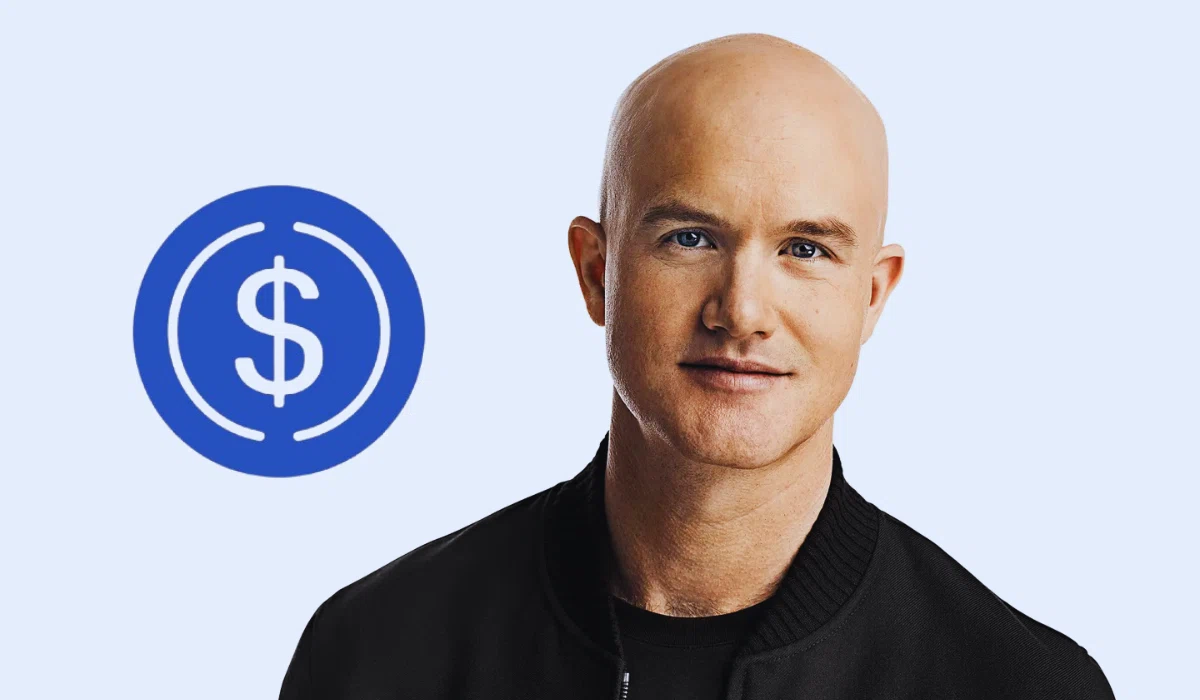Key Takeaways
- Brian Armstrong, the Coinbase CEO has recently criticized the current stablecoin regulations as ‘outdated’ through his X account.
- Armstrong expressed that the pending legislation should allow crypto firms to offer“on-chain interest” for the stablecoin holders without the interruption of government favoritism.
- Armstrong argued that the“onchian interest” of the stakeholders can enable the digital dollar to function like interest-bearing checking accounts.
- He said that the crypto industries and banks should be allowed for the incentivization and sharing of their interest with the respective customers.
- Armstrong pointed out the onchian technology of stablecoins and the inability of the issuers to use them due to the limitations within the legal system.
- The proposal of Brain Armstrong has attracted major positive feedback within the community. However, some are of the option that this is not necessary.
The Updation Criticism: Brian Armstrong on Stablecoins
Brian Armstrong, the Coinbase CEO has recently criticized the current stablecoin regulations as ‘outdated’. Armstrong expressed that, without the influence of government favoritism, the pending legislation should allow crypto firms to offer“on-chain interest” for the stablecoin holders. He has asked U.S. lawmakers to ensure consumers earn interest through the stablecoin legislation. He argued that the U.S. policy at the expense of the public or innovation should not protect banks. The “onchian interest” of the stakeholders can enable the digital dollar to function like interest-bearing checking accounts. The crypto firms still have to be confirmed on this by the pending legislation.
Brian Armstrong has expressed in his X account (previously known as Twitter) that the government needs to consider all industries alike. It should not thumb on one for the benefit of the other. Crypto industries and banks should be allowed the incentivization and sharing of their interest with their respective customers. This pattern is known as the free market approach.
Stablecoins: What do you need to know?
Like USDC, stablecoins are pegged at 1:1 to the U.S. dollar. They are backed by reserve assets like short-term Treasuries. Currently, these assets are largely made by the issuers. Armstrong insisted that this rightly belongs to the users. The comments by Armstrong surfaced as the lawmakers discussed the details of two stablecoins GENIUS Act by the Senate and the STABLE Act by the House. The legislation is already under debate over compliance with the Bank Secrecy Act (BSA), which is a cornerstone of the U.S. anti-money laundering law. Tom Emmer who serves as the majority whip in the United States House of Representatives, expressed that the stablecoin issuers should not be forced within the regulatory framework of BSA.
Currently, under the BSA, both STABLE and GENIUS treat all the issuers of stablecoins as financial institutions. While sidelining global competitors, this move could favor the U.S.-based firms. Enacted in 1970, the BSA requires substantial recordkeeping and customer verification from the United States financial institutions. Criticism is pouring from multiple avenues. U.S. Senator Elizabeth Warren has accused President Donald Trump of employing the legislation to enrich himself. She has pointed to the new DeFi venture called World Liberty of the Trump that has launched USD1, its stablecoin. Warren sees this as another personal money-enhancing scheme and Trump is using the stablecoin legislation as a gift.
Armstrong pointed out that the on-chain technology exists for stablecoins but most issuers cannot use this because of the limitations within the legal system. Currently, security laws have made exceptions to the savings and checking accounts, which allow them to pay interest, while the stablecoins do not have a similar exception. Hence, the amendments should be focused within the legal system to consider the stablecoins to be treated as regular savings accounts, Users can enable the on-chain interest without concern about regulatory implications. The CEO has added that this is the right time for the updation as the pro-crypto stance of the government and Congress is actively working on laws concerning stablecoins.
Armstrong noted that the enabling of the on-chain interest for stablecoins will reward customers in the US and globally. According to him, as the US consumers are the ones losing the most from on-chain interest, this can benefit them the most. Armstrong has explained this by comparing the average yield for the savings account to the Federal Reserve funds. He has also added that the improvements can strengthen the US dollar hegemony and boost the US economy as the US residents can generate more from their savings. Hence, this can be a positive development for the US ecosystem and consumers alike.
Stablecoin “outdated” remark: How did the market react?
The proposal put forward by Brian Armstrong has attracted positive feedback within the community. However, some think that this is not necessary. Artem Tolkachev, the popular crypto entrepreneur and legal expert, has noted that while the idea seems ideal initially, it is not upon closer look. He pointed out that bank accounts do not pay interest and it is the same case with crypto. He expressed that multiple DeFi platform users can yield from the capital while taking certain actions, and noting this, she argued that the stablecoin yields can only centralize the system and can potentially damage the broader cryptocurrency community. If the suggestion indicated by Brian Armstrong is implemented there are multiple benefits that the stablecoin holders can make. This includes higher yields for the consumers, democratization of financial losses, economic growth, increased spending, US Dollar dominance, and innovation. These are some of the enhanced opportunities that the stablecoin holders can benefit from, as per Brian Armstrong.
Also Read: Bitcoin Price Bounces Off $81,000 As Whale Accumulation Mirrors 2020 Bullish Trend

